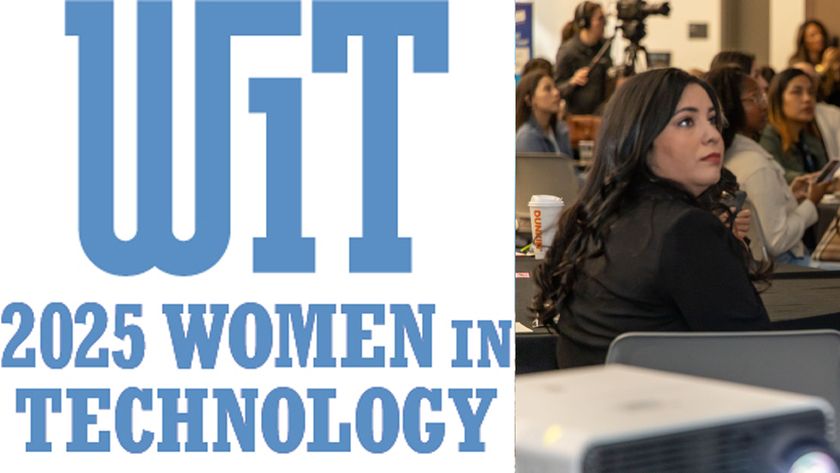Along with the SCN Top 50 Systems Integrators 2024 list, we polled a selection of leading firms on current Pro AV talking points.
What do you think will be Pro AV’s hottest technology trends in 2025?

David Riberi, President and CEO, LightWerks
In 2025, we anticipate that AI integration, augmented reality (AR), and advancements in AV-over-IP technology will drive major trends in Pro AV. AI-powered features like automated room configuration, voice-activated commands, cinematic-style videoconferencing, and intelligent analytics will streamline operations and create highly interactive experiences. In fact, our 5th Annual LightWerks Virtual Trade Show, which took place in late October, was themed "AI and AV." Additionally, with the growth of AR and VR in immersive training and experiential spaces, we expect to see an increasing demand for systems that bridge physical and digital environments seamlessly.
[Top Integrators 2024: Hiring Issues]

Michael Walker, Director of Engineering, IVCi
Meeting equity continues to drive corporate AV going into 2025, bolstered by tech advancements and the rise of hybrid work. With everyone wanting to feel included, whether in the room or remote, innovative tools like auto-tracking multi-camera systems, advanced design, and automation are key. AI is fueling these industry changes, leading to significant advancements in corporate AV. These upgrades ensure clear visibility and audibility, creating a smooth, inclusive meeting experience and making collaboration easier for all, no matter their location.

Ashish Maru, Director of AV Technology, Red Thread
In 2025, we anticipate a number of introductions in various AI-driven solutions. These solutions could be in the areas of meeting notes capture, AV system control, space management, energy management, etc. This includes the integration of IoT devices for creating smarter, more connected environments for personalized user experiences. Most immediately, voice-based tracking cameras to enhance the meeting experience is seeing a lot of growth and demand. Augmented and virtual reality always seem to be on the brink of takeoff, but we have not seen anything significant or scalable yet.

Ben Dandola-Grubb, Assistant VP of Engineering, Verrex
AI and machine learning will continue to rapidly enhance workstreams for individual workers at their desks and in AV systems, including meeting notetaking and summaries, action item lists, intelligent building and room systems with awareness and recognition of individuals, and customized experiences per individual. Also, whether you call it IoT, 5G connectivity, or simply network/internet access, more devices will be cloud-connected for management and monitoring, and many will fall into the XaaS category. Finally, Fortune 1000 companies are changing their traditional AV break-fix support staff into production/streaming engineers, creating high-quality in-house content and experiences.

Curtis Heath, President of Business Solutions, Guitar Center (GC Pro/AVDG)
In 2025, we expect innovations like automatically switched camera systems (Crestron 1 Beyond, Poly DirectorAI, QSC Seervision) and multi-camera switching on videoconferencing platforms (like Zoom Director) to be major trends. Additionally, dvLED chip-on-board (COB) solutions with finer sub-millimeter pitches and reduced pricing will lead to more installations.

Andrea Nicholson, Chief Strategy Officer, American Sound
While AI in AV is a hot topic, 2025 will be all about collecting data to drive intelligent results. Generative AI, specifically, requires consuming the necessary data, learning trends, and successful responses to formulate automatic outcomes. We are using proactive monitoring platforms to collect and analyze this data from a variety of sources to generate an accurate result. Additional AI development in the industry will include more options for intelligent tracking camera solutions and digital audio solutions that learn spaces, sounds, and features to dial in systems over time.

Jeff Stoebner, CEO, AVI Systems
In short, any technology that improves employee experience. Microsoft Places is closing in on general availability. Enterprises have been in a holding pattern, waiting for Places to be released. It is possible that we see a flood of investment in personal workspace and space reservation technologies. We will continue to see investment in high impact spaces. Largely driven by advancements in visual AI, there is a bit of race right now between manufacturers to produce best-in-class automated multi-camera solutions. Broadcast solutions will continue to be a major point of investment. Companies continue to seek out better ways to communicate with a distributed workforce. Continued advancement in broadcast technologies dramatically simplify the production process for leadership teams. Finally, we will continue to see investment in meeting room solutions at Enterprise scale. Return-to-work mandates appear to be picking up momentum. More people in the office means higher demand for collaboration technologies.
[Top Integrators 2024: Managed Services]

Joe Gillis, VP of Sales, New Era Technology
Managed services will be a significant trend, addressing customer needs with solutions ranging from on-demand break/fix services to predictive support. We also anticipate that automation and AI tools will keep evolving, enhancing skills across the industry and offering top-tier support levels.












